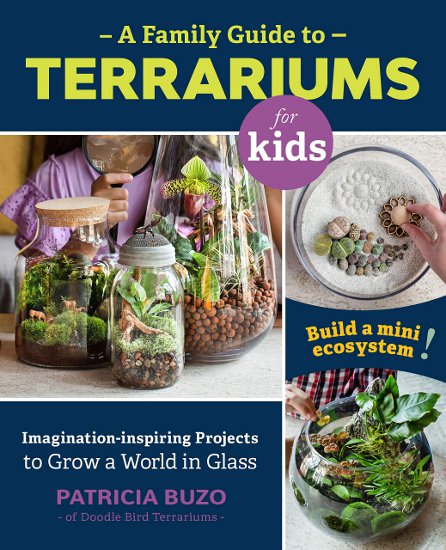
A Family Guide to Terrariums for Kids
by Patricia Buzo of Doodie Bird Terrariums.
.
If you have any comments, observations, or questions about what you read here, remember you can always Contact Me
All content included on this site such as text, graphics and images is protected by U.S and international copyright law.
The compilation of all content on this site is the exclusive property of the site copyright holder.
A Family Guide to Terrariums for Kids, a book review
Monday, 7 December 2020
Disruption due to covid-19. Day to day, the situation changes. Schools are open. No they are not. Remote learning to keep children safe at home. Flip-flop. What is important is to keep children engaged, interested, and learning. There's material provided by the schools and the teachers. There's more than reading, writing, arithmetic to interest a student at home. Suggested for students from 4 to 12 years old, "A Family Guide to Terrariums for Kids" promises imagination-inspiring projects to grow a world in glass.

A Family Guide to Terrariums for Kids
by Patricia Buzo of Doodie Bird Terrariums.
Sensibly, the book begins with choosing a container, where to find them, what they're made of, does it have a lid or is it open - who knew there was so much to consider. Sensibly, the author mentions that the plants that will be grown in the terrarium influences the container you choose. Numerous pictures clearly display the options mentioned in the brief paragraphs of text.
Step two - preparing your container for planting. What's this? Different soil mixes for different kinds of plants, from cacti and succulents (free draining) to carnivorous plants (moisture retentive but allows air circulation for the roots.) And then the fun bits - decorative elements such as colored aquarium gravel, seashells, miniature animal figurines (dinosaurs, anyone?) and more. These are not in depth discussions, more like just naming possibilities.
Then the best part - plants for terrariums. Alliteratively they are magnificent mosses, sensational succulents and cacti, amazing air plants, fabulous ferns, magnificent moss, and more. Each group get a two page spread and multiple images. But since these are living plants just like those in your garden they need care. A section on just this topic includes tools (after all, you cannot fit a rake or shovel in a glass jar!) so there are suggestions for tweezers, scissors, a spray bottle.
It is important to read all this material. Think of it as the foundation
for the fifteen terrarium projects that are the next portion of this book.
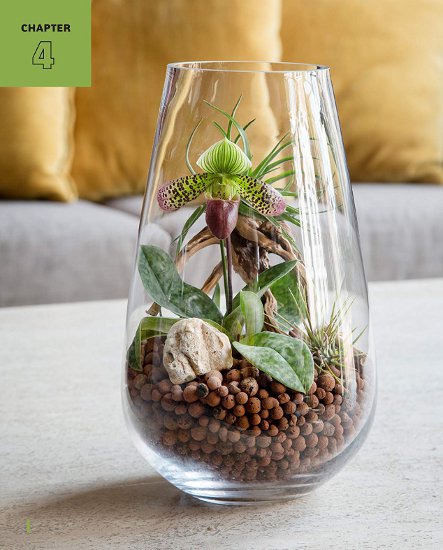
I was especially interested in Project 04, the Pet Marimo Moss Ball Aquarium
because I happen to have three marimo moss balls that I bought at Pet Smart
back in March. But as you can see mine are still in their plain, bare container.

A Family Guide to Terrariums has theirs with gravel, shells, and more. Hmmm.
I can see I shall have to get busy and create something that's more decorative.
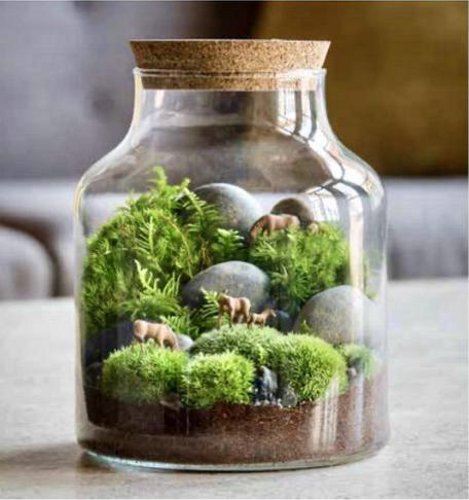
Another project that caught my fancy was Project 15, the Mini Moss Landscape.
I like the three dimensional look, and kids no doubt like the figurine inhabitants.
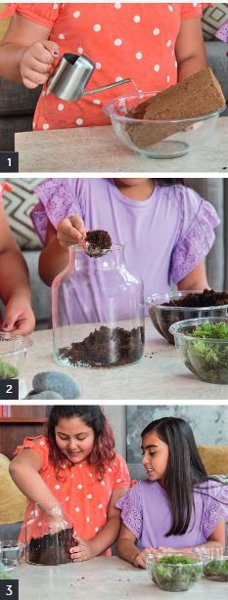 .
.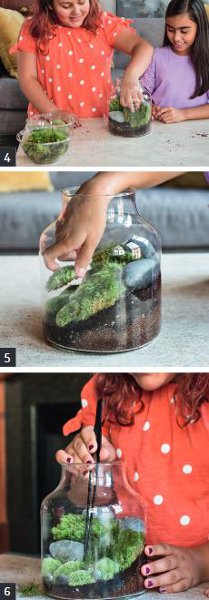
Step by step pictures clearly show what to do. Especially for younger kids I think
a container with an opening large enough to get their hand inside is better than
one with a narrow opening where tweezers are the only option for manipulation.
A pleasant option for a family activity at any time, A Family Guide to Terrariums for Kids would make a nice holiday gift, paired with a container or two. There is a page of on-line resources for containers, substrates and soils, and of course, for plants.
A Family Guide to Terrariums for Kids
by Patricia Buzo of Doodie Bird Terrariums
published by Cool Springs Press, Beverly Massachusetts
Softcover, ISBN: 978-0-7603-6734-6, $19.99, released 2020
A review copy of this book was provided by the publisher.
Back to Top
Back to December
Back to the main Diary Page